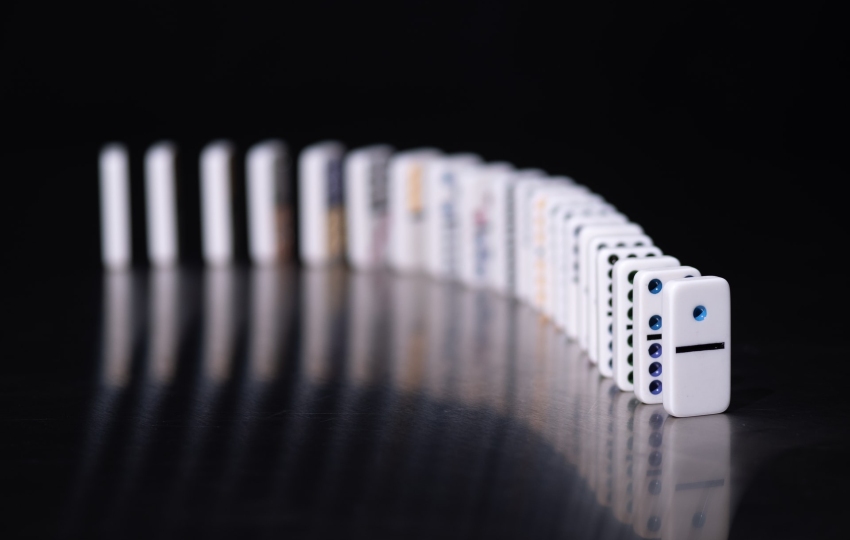In today’s competitive market, sales are more challenging as buyers become more time-strapped and bombarded with conflicting information. Consequently, effective communication requires knowledge of the situation and the proper timing. Trigger events can help you in prospecting by putting you in front of the appropriate customers at the right moment to begin discussing.
The key benefit of trigger events is providing appropriate timing for the conversation. According to Craig Elias, being the first to respond after a trigger event will help you win a sale 74% of the time. Thus, it is critical to start building a strategy to ensure the future success of your sales.
What exactly is a trigger event?

A trigger event is an indication that piques customer interest in the potential for change or the requirement for what we offer. A trigger event is anything that wakes people up to the prospect of progress or the necessity of what we provide. Trigger events can happen at any level, from person to global, and may be triggered by various reasons, including market fluctuations, environmental changes, economic problems, or reputation worries.
It’s essential to be aware of any planned changes in your field since they might provide a chance for your firm to embrace new technologies or collaborate with other companies. Trigger events are beneficial because they offer your company an opportunity to utilize cutting-edge technology or collaborate with other businesses.
“Sixty-three per cent (63%) of Best-in-Class firms currently deploy formal trigger event tools – notifications, RSS feeds, alerts, posting/tagging updates and the like – among their front-line sellers.” – Aberdeen
Triggers may be a powerful weapon in the hands of sales leaders who have a clear and thorough understanding of their target consumer profile (ICP). As mentioned in sales management guide from RevPilots, every sales leader should be fully informed regarding the characteristics of an ideal client, ranging from basic things like company size and sector to more advanced topics, including technology adoption, revenue growth trends, and so on. These concepts are not synonymous with triggers. The attributes of a firm are made up primarily of its traits. It’s not enough to grasp a firm by its features. We must also figure out who among our target customers will make purchasing decisions around our product or service and what motivates them to do so. This means that not all Trigger events are created equal, and a thorough understanding of your ideal consumer profile, buyer personas, and purchase decisions is required to create an effective B2B trigger event selling strategy and especially B2B content.
Five key examples of useful trigger events

The following is a list of everyday Trigger events and how they may be utilized, along with some examples. Growth, location, money, hiring, and legislation are the most frequent forms. Depending on the sector you work in and who your buyer personas are, these categories may or may not be effective for different sales teams.
- Company Result Announcement – The release of company results might be an indicator of a need for improvement. A quarter of negative outcomes, for example, might be a sign that management is attempting to embrace change , which you may use to promote your product or service.
- Company Expansion – New suppliers, partners, or a more open attitude to change would be required by companies that enter a new region.
- New Technology Installs – One of the most successful methods to take advantage of the signal of new technology installations is to find out who is buying into technologies with which you have partnerships or integrations. Look for firms that have recently started using Hubspot in your ICP if your product connects with it. They will be more likely to buy it as a result of this, making them more inclined to purchase it.
- Mergers and Acquisitions (M&A) Activity – A merger and acquisition activity, therefore, is a signal of company change on all levels. New opportunities to use cutting-edge technologies and procedures are anticipated across the firm as a result of organizational changes in recruitment, funding, and operations.
- Appointment of C-Suite executives – New C-Suite executives are frequently promoted and expected to turn things around and bring change in a short amount of time. As a consequence, their enhanced decision-making authority and desire for change make them more open to new technologies and methods. As a result, this provides an opportunity to market something.
You can use the same technique to create rules for other lists on your site. You can also apply it to any text-based CMS, as there are no formatting requirements. Since you’re tracking many trigger events, determining which ones to pay attention to is crucial, especially for B2B sales. The most effective trigger event for B2B sales is a decision-maker shift because new recruits are expected to contribute to growth. Next comes a change in outcomes or strategy since it necessitates adaptation. The third crucial trigger event for B2B sales is when a decision-maker has a horrible experience with a current service provider’s product, service, or personnel. They will develop an unfavourable view of you if you have a terrible experience with their current business service. Dissatisfaction makes them more open to other alternatives. Because this window of opportunity is so restricted, it is critical to move quickly.
Why is having a strategy important when using trigger events?
It’s essential to keep in mind that not every trigger occurrence is relevant to each firm, which is why a specialized B2B trigger sales approach is so essential. It’s critical first to establish your target consumer profile (ICP) and have a set event management platform in place when creating a B2B Trigger Event marketing strategy.. Knowing this will assist you to plan your campaigns and target the appropriate individuals. The following example illustrates why particular attention must be paid to the development of B2B trigger events.
Let’s pretend you’re a sales development representative for a firm selling an HR solution that connects to HR systems like Workday or SuccessFactors, and your company has over 1,000 employees and more than $100 million in annual revenue. Every time a firm switches to Workday or SuccessFactors represents an opportunity for you to engage with the surrounding context around the Trigger event for you as a salesperson attempting to sell marketing automation software to the head of marketing at small companies.

B2B sales triggers can assist you in personalizing and tailoring your sales pitch after you’ve established when to target future prospects. Triggers are crucial for determining the optimum time and establishing the context for your meeting with prospects. They “warm up” the conversation we’re about to have, providing evidence of study and relevance behind your cold outreach. When prospects understand why you contacted them, they’ll be able to spot the significance of your message much more readily. You’ll be prepared with an answer for the question, “Why now?”
“You are 5x more likely to close deals with Trigger event selling” – Craig Elias
How do you find trigger events?
There are a variety of ways to monitor trigger events effectively. You must be in front of prospects as soon as possible. Therefore, you must act quickly when you receive alerts from these systems.
- Setting up Google Alerts – Create a Google Alert for the name of your choice and set it up. New product announcements, company expansion, and senior executive employment changes are all examples of trigger events that this might assist you with monitoring.
- Monitoring LinkedIn feed – Following certain corporations or individuals that you are interested in on LinkedIn will provide you a live newsfeed of business announcements and job changes. Given the need for constant monitoring, this is more difficult to keep track of, and it might prevent your team from functioning in real time.
- Monitor Social Media – A lot of corporate news will be published on social media. Following these websites will help you get ahead of the curve when it comes to these announcements.
- Sales Intelligence Tools – Sales intelligence tools are the most useful out of the several methods. They can collate all the above information to feed you real-time alerts and data. One example of a sales intelligence tool is Triggr.
Overall, trigger events are a powerful sales tool. They’ll assist you reduce your sales cycle and increase efficiency by giving context and incentive to the discussion.

